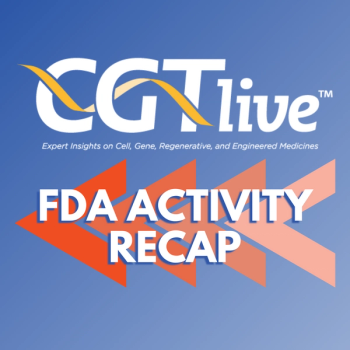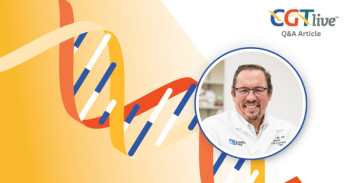
For High-Grade NHL, High-Dose Chemotherapy With Stem Cell Transplant Beats CHOP
NANTES, France-High-dose chemotherapy followed by autologous peripheral blood stem cell transplantation (PBSCT) leads to better event-free survival and freedom from progression in people with intermediate and high-grade non-Hodgkin’s lymphomas (NHL) than does the standard therapy. That was conclusion of a randomized trial comparing autologous PBSCT with CHOP (cyclophosphamide, doxorubicin, Oncovin, prednisone) and reported by Noël Milpied, MD, of the Centre Hospitalier Regional et Universitaire de Nantes, at the ASH meeting.
NANTES, FranceHigh-dose chemotherapy followed by autologous peripheral blood stem cell transplantation (PBSCT) leads to better event-free survival and freedom from progression in people with intermediate and high-grade non-Hodgkins lymphomas (NHL) than does the standard therapy. That was conclusion of a randomized trial comparing autologous PBSCT with CHOP (cyclophosphamide, doxorubicin, Oncovin, prednisone) and reported by Noël Milpied, MD, of the Centre Hospitalier Regional et Universitaire de Nantes, at the ASH meeting.
In the trial, Dr. Milpied and his collaborators pitted CHOP against high-dose chemotherapy followed by autologous PBSCT. The subjects were 195 people newly diagnosed with non-high-risk intermediate or high-grade NHL. Patients were randomized into one of two treatment groups.
§ One group received four courses of CHOP every 21 days, followed by another four courses for patients who had at least a partial response.
§ The other group received two courses of CEEP (cyclophosphamide, epirubicin [Ellence], Eldisine, prednisone) 15 days apart. Patients who responded received a course of high-dose methotrexate with cytarabine (ara-C) on day 37, followed by BEAM (BCNU, etoposide, ara-C, melphalan) on day 66 and autologous PBSCT.
Improved Survival
The 168 patients that could be evaluated were compared based on intention to treat. There was a trend for a higher 4-year survival rate among autologous PBSCT patients (76%) than among CHOP patients (51%). In addition, the rates of both event-free survival and freedom from progression were significantly higher in patients in the transplant arm. The autologous PBSCT patients had an event-free survival rate of 59% and a freedom from progression rate of 60%. For those on CHOP, the event-free survival was 38% and the freedom from progression rate was 40%.
When researchers calculated survival rates for the two study arms based on age-adjusted prognostic index, they found that there was no difference in survival for people with an International Prognostic Index of 0 or 1. But for patients with an index of 2, transplant patients had a 3-year survival rate of 83% vs only 50% for CHOP patients.
There were four toxicity deaths in the stem cell transplant arm vs one among CHOP patients, a difference that is not statistically significant. However, autologous SCT patients did have more hospitalizations.
Although CHOP has been the standard therapy for NHL, its results are poor, Dr Milpied said. He concluded that for those patients [who have intermediate or high-grade NHL with an index of 2], CHOP should no longer be regarded as standard therapy. Rather, high-dose therapy with autologous stem cell transplant is superior.
Newsletter
Stay at the forefront of cutting-edge science with CGT—your direct line to expert insights, breakthrough data, and real-time coverage of the latest advancements in cell and gene therapy.































